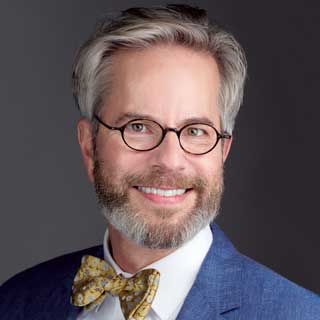

It seems inevitable. You are likely among the 53 million people in the United States who are unpaid caregivers for a loved one. If not, you may soon join their ranks.
This unpaid and frequently unplanned care may be rewarding, or exhausting, or both at once. Without question, it challenges the very nature of caregivers’ personal and professional lives.
But for the unpaid caregivers in your employ and in the greater community, it also represents an opportunity to create a vital support mechanism: the virtuous circle.
Some data
An AARP research report, Caregiving in the U.S. 2020, notes that among American adults, 47.9 million, or 19.2%, provided unpaid care to another adult. While 61% of these caregivers were employed at the same time, only about half reported that their employer was aware of the care they provided out of the work setting. The same percentage of caregivers acknowledged that their personal situation has had at least one impact on their paid employment — shifting their hours worked, taking time off or even leaving their position entirely.
The type of care provided almost always included instrumental activities of daily living (IADLs) and often included activities of daily living (ADLs). Fifty-eight percent of caregivers also assisted with medical/nursing tasks. Another AARP report estimates the economic value of this unpaid care at approximately $470 billion.
How can you help those in the community?
Unpaid caregivers report needing help with many aspects of the care they provide. Here are just some examples:
- Ensuring home safety
- Providing ADL support
- Supplying proper nutrition
- Managing behavioral symptoms
- Making end-of-life decisions
- Controlling pain
- Navigating the healthcare system
- Confirming eligibility for services and completing paperwork
- Giving, and receiving, emotional support
It’s a long list, but consider this: You already have the tools to excel at providing such support. The resources that you use to educate your CNAs and others, the educational modules and tip sheets that you access through your vendors, can help these community-based caregivers manage their tasks at home and create a virtuous circle.
So what is the virtuous circle?
An unpaid caregiver may ultimately become your next CNA. The rewards of caring for a loved one may bring to the forefront a desire for a new, more mission-driven career. At the 72nd AHCA/NCAL Convention & Expo, opening speaker Marlene Cestaro reinforced this concept. After caring for a loved one, Marlene felt a calling and began her journey as a CNA. Today she is a unit head at the Bartley Healthcare campus in Jackson, NJ, as she studies to become an RN. Creative engagement of community caregivers may result in your next hire.
As well, a loved one being cared for at home may become your next resident. By supporting a community-based unpaid caregiver, you are building a trust relationship. At some point, the loved one may require short- or long-term facility care. If you’ve worked to nurture that trust, it’s a logical conclusion that the caregiver will perceive your facility as an extension of their home.
Don’t forget about your own staff
We are in a staffing crisis. You may think it’s impossible to conceive of taking on yet another obligation, even if you buy into the virtuous circle that I propose. Yet remember that these unpaid caregivers are on your payroll. When they are at work, their minds drift to the loved one at home. When, or if, they take a break, they call their loved one or a family member and run lists of home responsibilities through their mind. They may call out tomorrow, and the next day, or arrive late because they are needed at home. They may reduce their hours, or ultimately leave your employment, unless you figure out how to throw them the lifeline they need.
“These are ‘double-duty’ caregivers — paid caregivers at work and caring for a loved one at home,” said Alexandra Drane, co-founder and CEO of ARCHANGELS, a Massachusetts-based company changing the way caregivers are seen, honored and supported. ARCHANGELS has surveyed thousands of caregivers, using their proprietary tool, the Caregiver Intensity Index™, to give caregivers insights into what is most driving their intensity around the care they provide.
“Up to 63% of double-duty caregivers are ‘in the red,’ compared to 25% of caregivers on average. This translates into higher adverse mental health impacts — TSRD, use of substances to cope and even suicidal ideation — at 4.5X those of caregivers ‘in the green.’ Double-duty caregivers are in crisis. Support cannot wait.”
What can you do to support their home caregiving yet keep them engaged at their paid employment? Flexible work hours? On-site adult daycare? Someone to run their errands? Meals to go? Use of facilities to do laundry? Those are all great steps. But in addition, how about leveraging your vendor partners? What support can they offer?
Here is my plea to our diverse, multitalented and dynamic vendor partners: Help providers extend their efforts beyond the bricks and mortar of their buildings. Let them use your educational, engagement and support modules and tools in the community. Let caregivers use those resources to better manage their unsung care in the home.
During the writing of this blog, I became an unpaid caregiver. As my family faces a terminal illness of a beloved family member, I am quickly seeing its impact across all dimensions of my life. Our profession can take a unique position and support the unpaid caregivers, whether they are members of our staff, members of our community or ultimately ourselves. The virtuous circle is just that: virtuous.
If you are caring for a loved one, click here to get your Caregiver Intensity Score and get connected to resources for support.
Steven Littlehale is a gerontological clinical nurse specialist and chief innovation officer at Zimmet Healthcare Services Group.
The opinions expressed in McKnight’s Long-Term Care News guest submissions are the author’s and are not necessarily those of McKnight’s Long-Term Care News or its editors.




